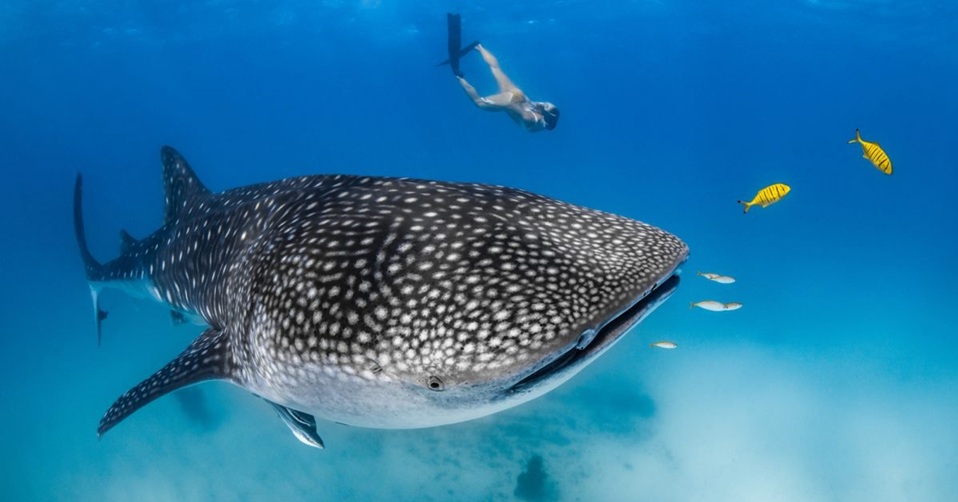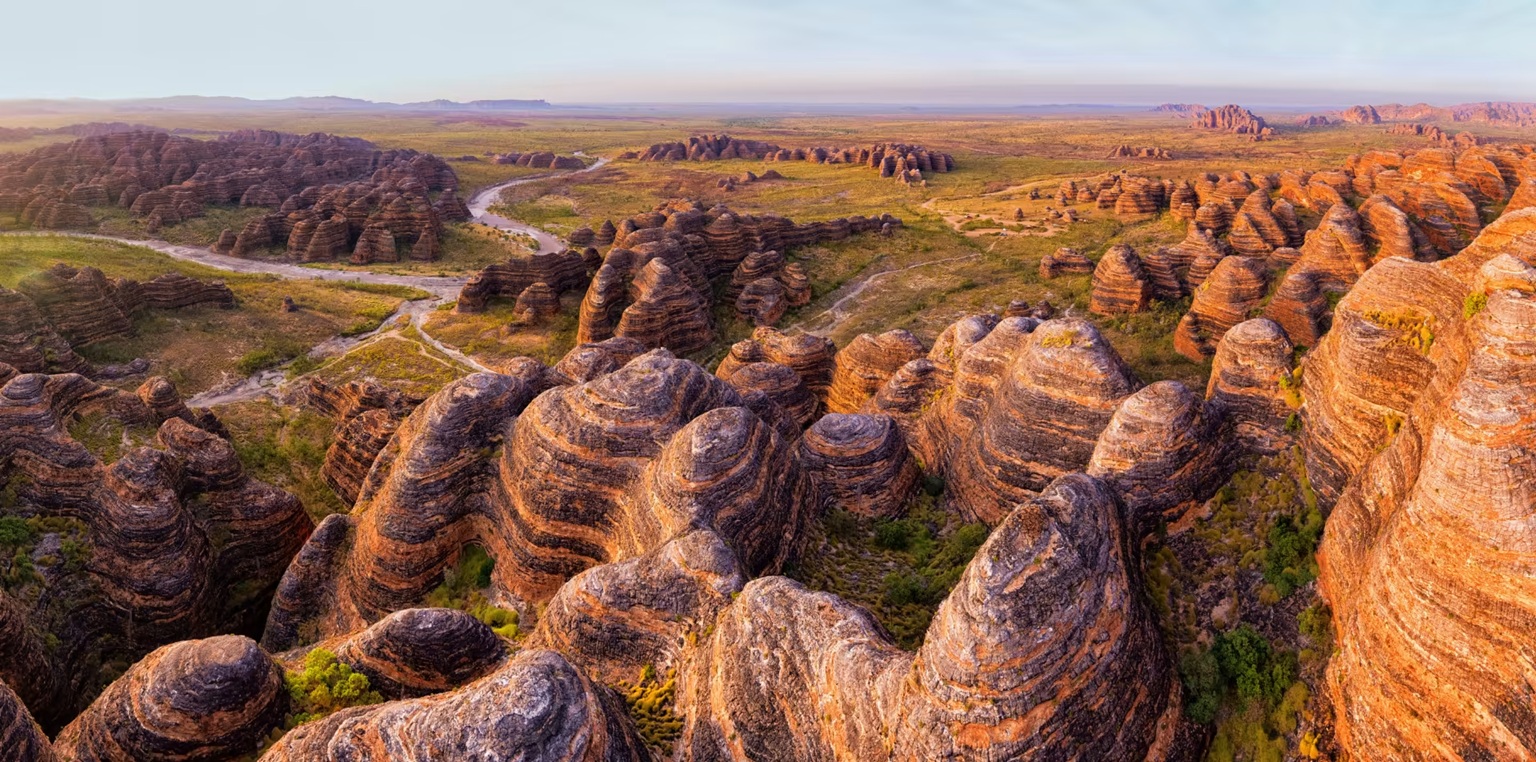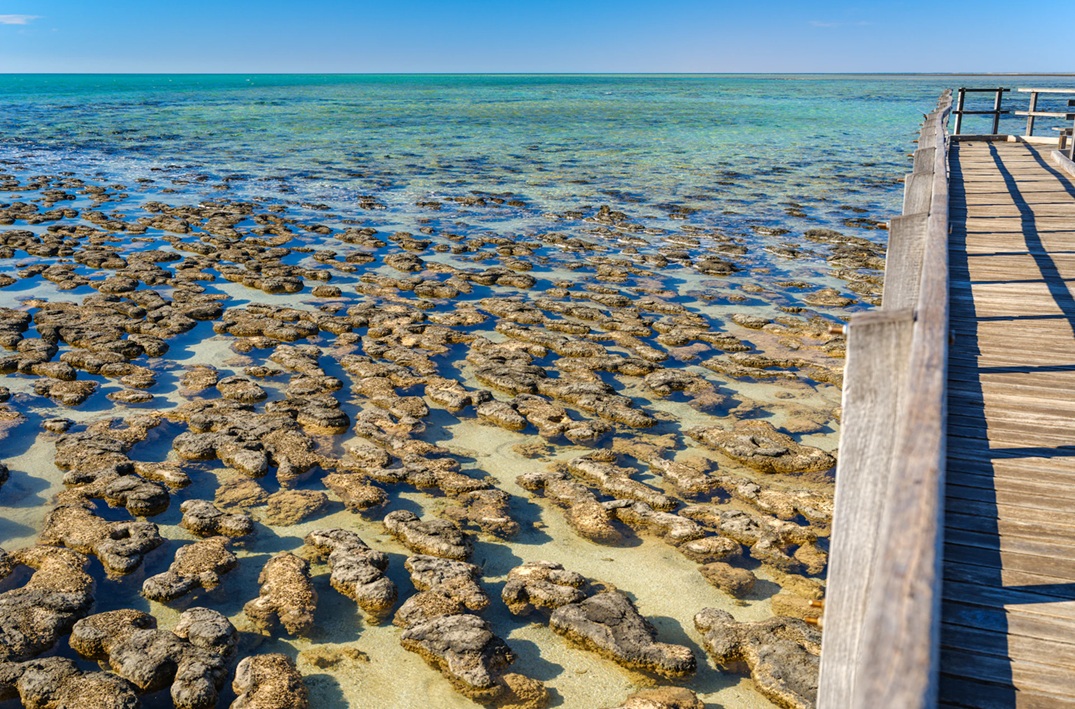
Western Australia is known for its epic coastlines, rugged mountains and deep gorges, but did you know the state is also home to three of the world’s most unique UNESCO world heritage sites?
To be recognised as a UNESCO World Heritage Site, an area needs to have cultural or natural significance that is seen as so exceptional that it transcends national boundaries and is regarded as important to present and future generations of all humanity.
These world heritage sites in Western Australia not only highlight the rich natural history of the state but also celebrate the deep cultural and spiritual connection Aboriginal people have with the land.
Purnululu National Park in the Kimberley Region of the North West of Western Australia is a 239,723 hectare marvel of natural beauty and wonder. Known for the world heritage listed Bungle Bungle Range, Purnululu National Park is famous for its isolation and one of Australia’s most striking geological landmarks.
 The Bungle Bungle Range in Purnululu National Park is a UNESCO World Heritage Site. Image: Australia's North West
The Bungle Bungle Range in Purnululu National Park is a UNESCO World Heritage Site. Image: Australia's North West
The Bungle Bungle Range in Purnululu National Park is a massive range of quartz sandstone eroded over a period of 20 million years into a series of beehive-shaped towers or cones.
These orange and black sandstone domes sit 300 metres above the grass-covered plains are known as the Bungle Bungles and are one of the world’s most fascinating geological landmarks.
Marked by distinctive horizontal strips, these outstanding examples of cone karst owe their existence and uniqueness to several interacting geological, biological, erosional and climatic phenomena.
Getting to the Bungle Bungle Range is an exercise on the depth of Western Australia. A whopping 33-hour drive from Perth, take a drive along the Great Northern Highway to find the turn-off to Purnululu National Park, approximately 250km west from the town of Kununurra.
From the highway, allow about 2.5 hours to travel the rugged 53km access track to the National Park. It's also possible to visit Purnululu National Park as part of a guided tour - choose from an extended 4WD tour through the Kimberley, or a shorter trip by scenic flight, some with the option to land within the park.
Purnululu means ‘sandstone’ in the Aboriginal language, and this landscape has a strong cultural significance to the local Aboriginal people. They maintain a strong connection to their historical landscape, and express their continued connection through story, song, art and visits.
The area holds great spiritual value for the Aboriginal Kija and Jaru peoples, with many sacred sites and Dreamtime stories connected to the land.
Shark Bay is one of the world’s most beautiful and diverse wonderland of natural attractions. The vast sea-grass beds, the dugong population, and the stromatolites form part of the reason why this area is designated as a UNESCO World Heritage Site. Shark Bay is also Australia’s largest bay, boasting over 1,000 kilometres of coastline, beaches and national parks for you to explore.
Dirk Hartog Island National Park sits within Shark Bay and is known as Western Australia’s largest island! One of the world’s most important islands for mammal conservation, the island also comes with dramatic cliffs, pristine beaches and epic fishing spots.
Swim to your heart’s content in pristine waters, dive and snorkel to meet the local wildlife. Dirk Hartog can only be accessed by 4WD, so if you’re looking for adventure the ongoing sand dunes and dirt tracks will get your adrenaline pumping.
As part of the Shark Bay World Heritage Area, the marine life in this park will not disappoint. Head into the clear waters with your diving and snorkelling gear and you won’t be disappointed by the sea-life you may encounter! We’re talking turtles, manta rays, sharks, dugongs, dolphins and epic schools of fish.
 Rock-like structures known as Stromatolites at Hamelin Pool. Image: Australia's Coral Coast
Rock-like structures known as Stromatolites at Hamelin Pool. Image: Australia's Coral Coast
Hamelin Pool Marine Nature Reserve is part of the Shark Bay World Heritage Area because of the rare marine stromatolites that live in the reserve. Called ‘living fossils’, these rock-like structures have been at Hamelin Pool for 3.5 billion years. Marvel at being in one of only two places on the planet where you can see these ‘living fossils’.
The Hamelin Pool stromatolites are located approximately 38 minute drive from Nanga.
A trip to Shark Bay isn’t complete without heading out to Monkey Mia!
A fantastic place for families and nature lovers, meet between four and seven dolphins that visit the shore for daily feedings. The dolphins are provided with less than 10% of their daily intake to keep up their wild feeding and hunting. The feedings take place up to 3 times each morning, between 07:45am and 12 midday.
Try and spot more marine life like dugongs, sharks, manta rays, turtles and even humpback whales. Jump on a boat charter to learn more about the marine life in Monkey Mia, or head out on an incredible scenic flight to see the landscape from the air.
Enjoy the beachfront accommodation at Nanga Shark Bay Caravan Park, located right in the Shark Bay World Heritage Area. The perfect place to base yourself as you explore this diverse region, there's no place better to come back to after a big day out exploring!
Book your accommodation for your trip and get ready for the adventure of a lifetime!
The world-famous Ningaloo Coast is a wonderland of coral reef systems where it’s stunning underwater scenery, marine life, and biological diversity have cemented it’s position as a UNESCO World Heritage Site.
A 604,500 hectare marine park, it boasts one of the longest near-shore reefs in the world and a dearth network of underground caves and water courses. The incredible diversity of habitats including lagoons and reefs all sustain both tropical and temperate marine fauna and flora, including marine reptiles and mammals.
 Swim with the Manta Rays at Ningaloo Reef. Image: Australia's Coral Coast
Swim with the Manta Rays at Ningaloo Reef. Image: Australia's Coral Coast
Declared a UNESCO World Heritage site on the 24th of June in 2011, the Ningaloo Reef is Australia's largest fringing reef and is one of the largest on Earth. Ningaloo Reef is protected as part of the UNESCO World Heritage-listed Ningaloo Marine Park, which also encompasses coastal lagoons, the open ocean, continental shelf and coastal reserves.
One of the most incredible experiences to be had at the Ningaloo Reef is to meet The Ningaloo Big Five – nature’s ultimate marine encounter.
Ningaloo Reef is one of the only places on Earth where you can experience all five in their natural habitat